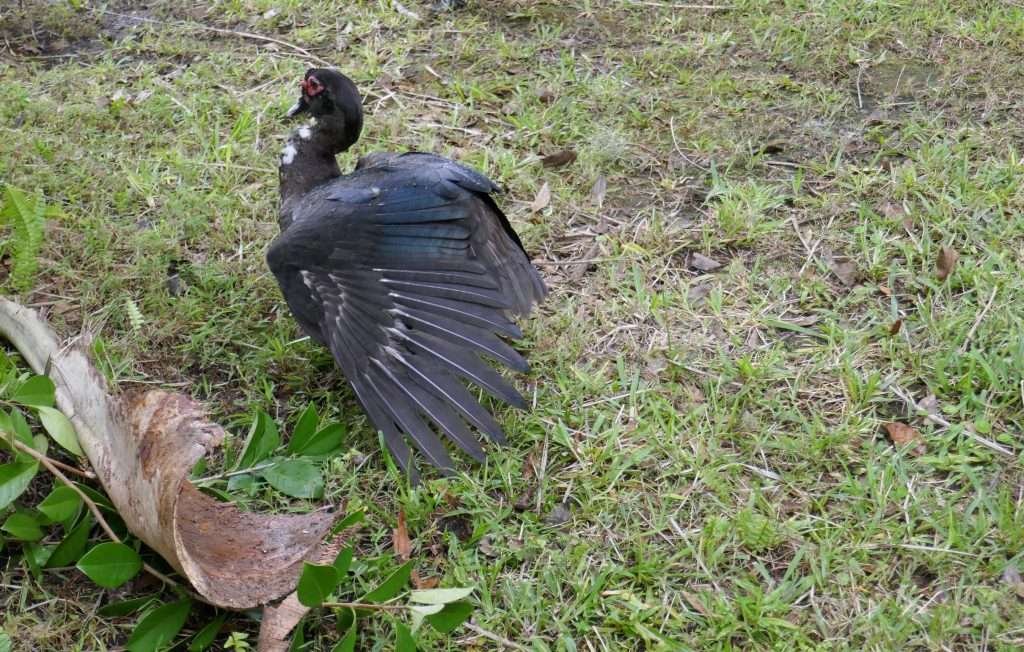Muscovy Duck
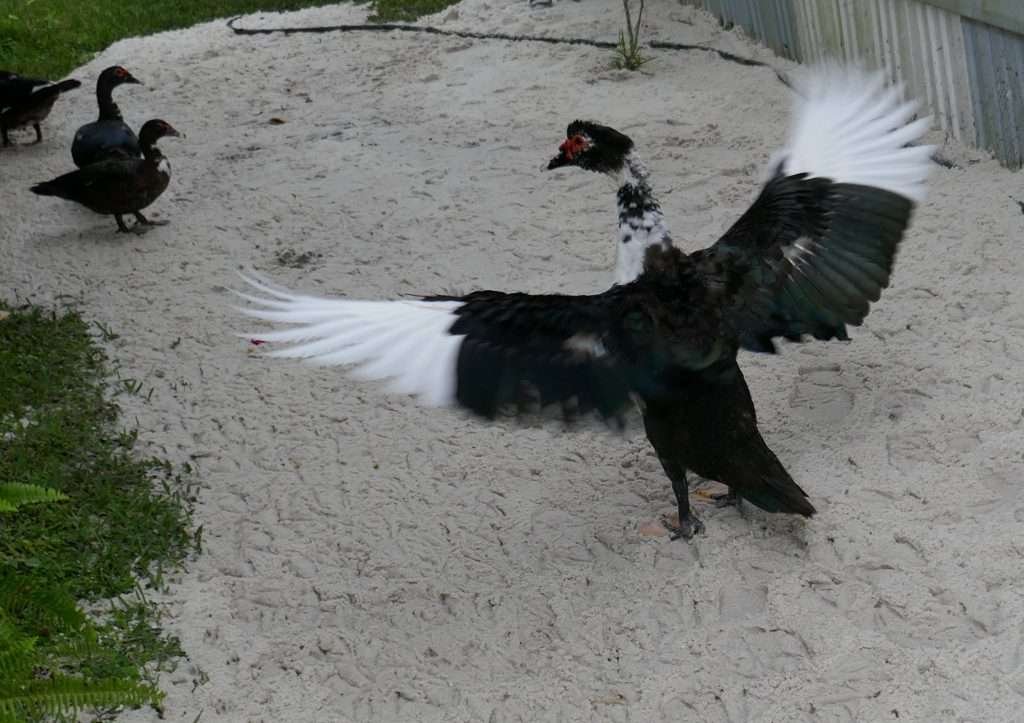
The rather large Muscovy duck, Cairina moschata, is often seen at suburban ponds and lakes and its presence can sometimes be polarizing. These are large birds that are comfortable living near people and consequently tend to leave droppings in driveways, near doorways, garden paths, and so forth. We recently moved to a lake in central Florida and have gotten to know some of the individuals of the local flock. Being visited by them daily and getting to know their quirks and individual personalities has been a surprisingly pleasant experience. There is more to this misunderstood bird than you may know, so read on.
Wild Muscovy were originally native to Mexico, central and south America, and were domesticated there hundreds of years ago. Due to range expansion into southern Texas, the U.S. Fish and Wildlife Service in 2010, reclassified Cairina moschata as a naturally occurring species and added them to their Migratory Bird Treaty Act. (50 CFR 10.13) [1]
For the record, there is no law prohibiting the feeding, keeping, or raising Muscovy ducks for either food or as pets. There is also nothing stopping a landowner from killing the birds, or their eggs, and the only restriction was a revision to 50 CFR 21, 14(g) that prohibits the release of captive-bred Muscovy ducks to the wild, including for hunting. [2]
I mention this because recently, I was approached by a neighbor who expressed actual anger at seeing me throw corn to some young Muscovy ducks in my yard. He incorrectly stated that this is illegal – which it is not, and calmed down only when I pointed out that big box stores sell seed that I put out for the song birds that are protected by the same laws as the ducks. As for the droppings, sure that’s annoying, but I clean up my yard after dogs and cats daily, and last I checked, I own neither a dog nor a cat. Some people just don’t like Muscovy ducks, which is fine, but they shouldn’t expect me to modify my behavior to suit their tastes. Besides, nothing is more annoying, duck poop included, than people who cite rules and laws they know nothing about. That said (whew! I feel better), let’s move on.
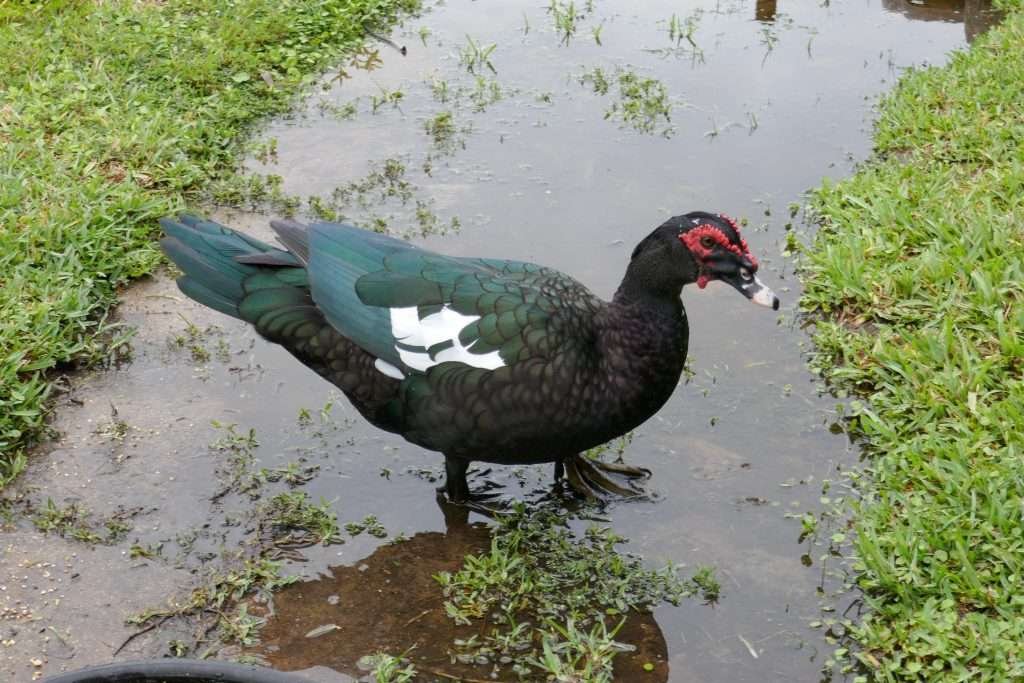
The Muscovy ducks we live with are a domesticated version, that even Audubon refers to as ‘dumpy’. Unlike their wild siblings which are mostly black, swift-flyers and slightly smaller, Muscovy ducks are all, none-the-less, biologically considered to be Cairina moschata and given equal protection under the Migratory Bird Treaty Act.
There are two subspecies, the Cairina moschata sylvestris (wild), common name pato real, which is Spanish for royal duck. The other is Cairina moschata domestica (domestic), a.k.a. pato criollo, or creole duck.
Genetically, they are more closely related to geese, whereas all other domestic ducks are descendant from the mallard. This may help to explain some of the quirkiness of our feral version, such as hissing instead of quacking, ambivalence to sharing space with us, large size, preference for dry land, and so forth.
The domestic version is quite large with males, called drakes, reach up to 34 inches in length and 15 pounds. Females are up to 25 inches and about half the weight of the males. The wild variety are smaller with the drakes typically around 30 inches and a weight of about 9 pounds or less.
Females normally lay 12 to 15 eggs, with a 35 day incubation period, and she does this up to 3 times per year. She builds a nest in a tree cavity near water, and leaves the eggs once per day, just briefly to forage for food. Her offspring will reach sexual maturity and begin breeding in 1 year after hatching. [3, 4]
Although the literature states they nest in tree cavities I have never seen this behavior and the females I see at my lake are too large for most tree cavities. My experience has been that they nest on the ground underneath dense foliage. They pick locations in heavy underbrush where their comings and goings are concealed. She leaves the nest to eat and bathe in the afternoons, but otherwise stays on the nest to keep the eggs incubated until they hatch then abandons the site.
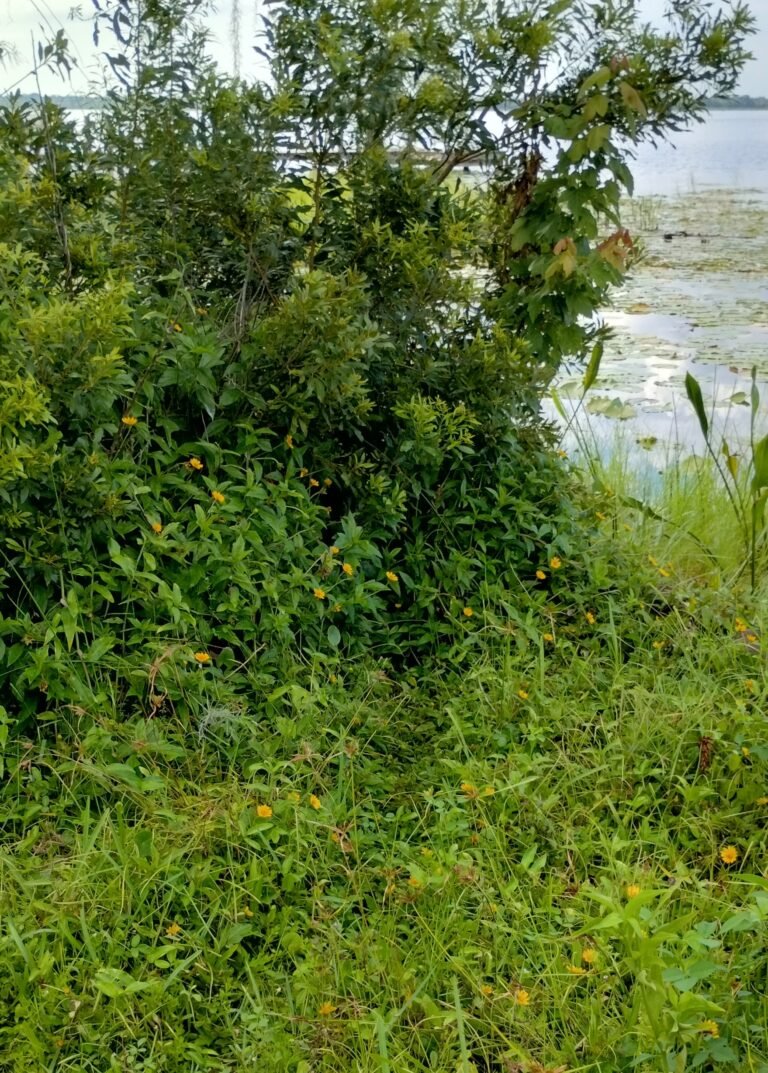

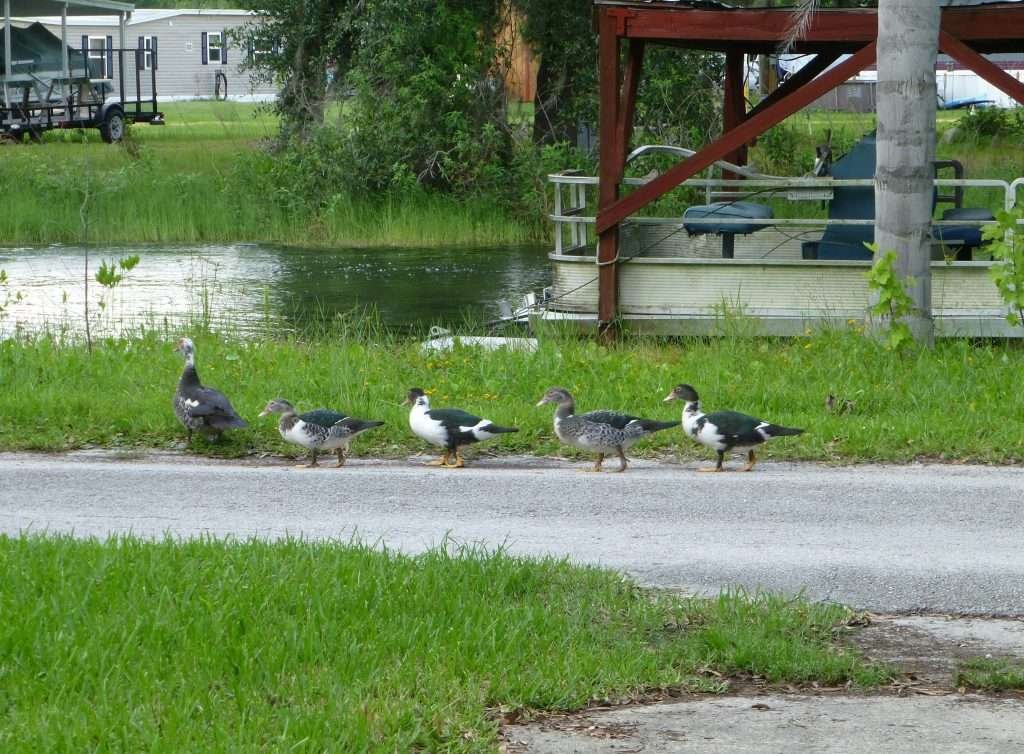
Aside from their quirky behavior, large size and willingness to live near people, Muscovy are quite distinctive in appearance. A drake, especially, will grow large bumps on his red head and face which can be a little off-putting to our sense of beauty. The females have these as well but they are not as pronounced. They also have large legs and clawed feet, and on the drakes, the claws are somewhat imposing. I have never seen them use their claws for scratching the ground such as chickens do, or as weapons. They do likely add to their ability to traverse muddy banks, and in general, aide them in their preference to spend the vast majority of time standing on terra firma, rather than in trees or on the water.
The domestic Muscovy duck is a capable, short-hop flyer, but perhaps it is their bulk that causes them to prefer both walking, and swimming, to flying. This is despite the fact that they have large wings, with the wild drakes sporting a wingspan of up to 60 inches.
We have enjoyed watching the hatchlings as they get their flight feathers and then begin to test and practice their flapping, then running and flapping, usually in a spontaneous and contagious display. After a couple of months, these young ducks will often take short flights around the yard, sometimes executing landings that are, at best, ungraceful. Still, as with most any bird, they are beautiful in the air. The adults can be seen flying over our canal in the evening on their way to roost. Even the largest and heaviest drake will take flight, for a short distance, to return to a favorite roost.
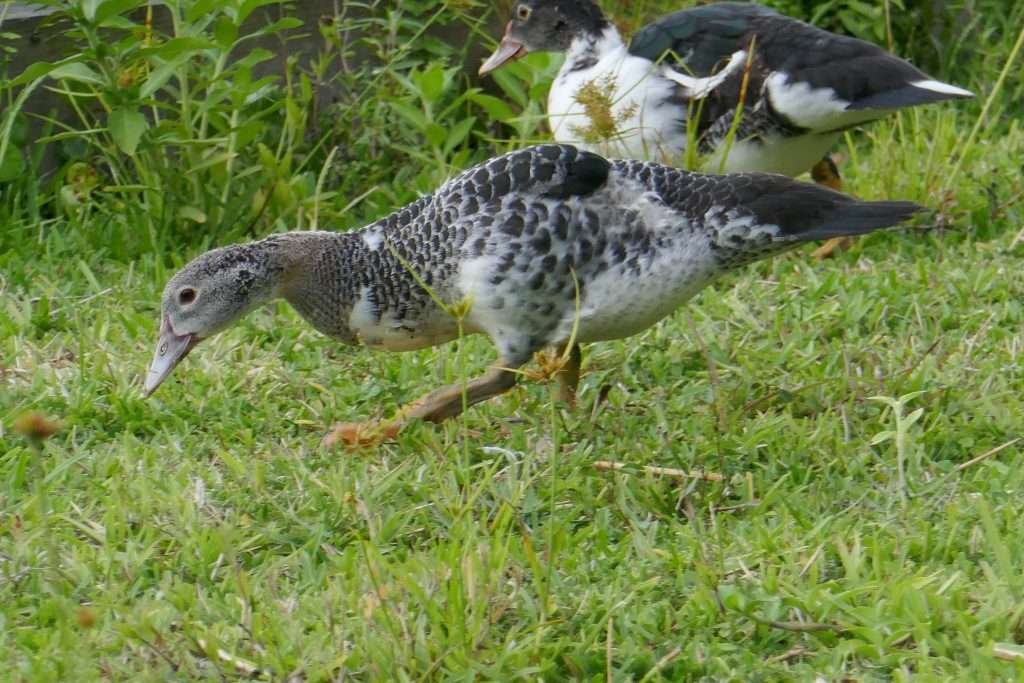
The domestic Muscovy duck exhibits a large range of feather coloration and patterns. Several domestic varieties have been bred from the two sub-species of Cairina moschata, including:
Barred Muscovy
Black Muscovy
Blue Muscovy
Bronze Muscovy
Chocolate Brown Muscovy
Green Muscovy
Lavender Muscovy
Pied Muscovy
Ripple Muscovy
White Muscovy
The French consider Muscovy duck meat to be a premium product, and raising Muscovy for food is gaining popularity in the United States. [5] They are also commonly kept as pets due to their friendly, agreeable, nature, and once you become accustomed to them in your environment, you begin to notice their weirdly endearing behavior which includes recognition calls to us when they see us, tail-wagging when happy or excited, even open-mouth expressions when they want something.
It is also interesting to watch them chasing all manner of insects, lizards, small frogs and so forth. Even the smallest hatchlings will make short sprints to chase small bugs, spiders, ants, really anything small enough to swallow. They sample most any plant and appear to really like new growth, seeds and even occasionally leaves.
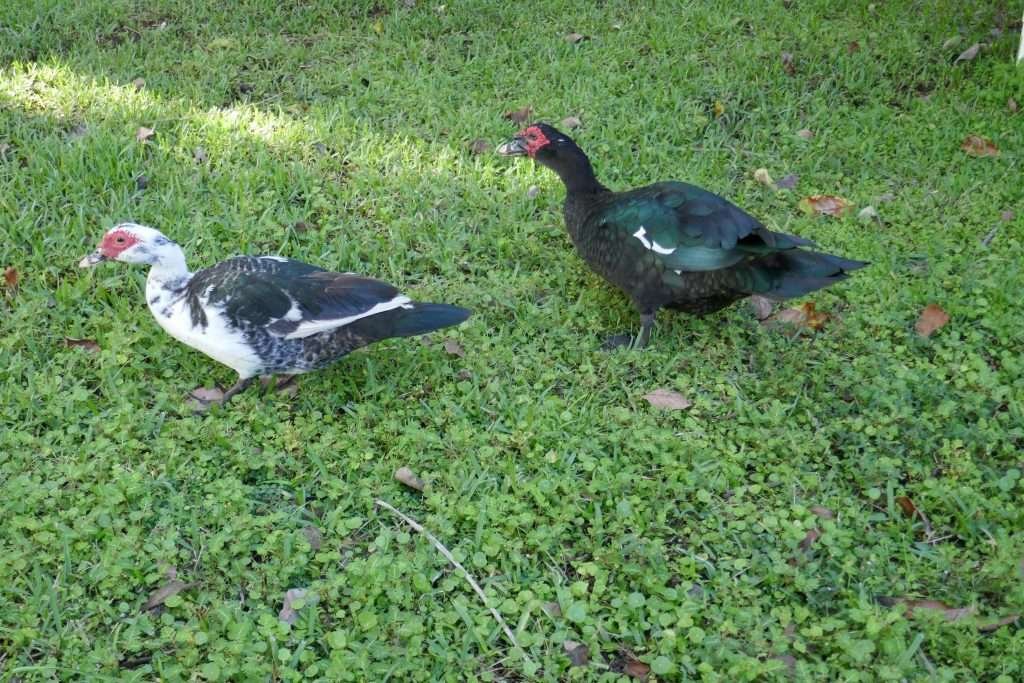
Our summer showers, here in central Florida, can be intense, but the Muscovies are clearly happiest when there are puddles everywhere, and the drainage ditches are full. There is really nothing I can think of that is cuter than seeing baby yellow Muscovy ducks swimming in a mud puddle after a summer downpour.
It is also bittersweet seeing a new clutch of hatchlings with their numbers dwindling day-by-day as they are lost to predators. Nature can be harsh for sure. We assure ourselves that this is natural and necessary, otherwise, we would be overrun with these birds. The predators of Muscovy ducklings include: domestic cats and dogs, racoons, foxes, owls, hawks, herons, alligators, oppossums, skunks and even minks.
Next time you encounter a group of Muscovy ducks I would urge you to look past their rather ‘distinctive’ beauty, and somewhat strange behavior, and appreciate them for their role in the ecosystem. Muscovy are a part of nature’s maintenance matrix and daily, they do their part to maintain a balance of insects and small reptiles that would otherwise dominate our landscape, and their hatchlings provide much needed food for their predators.
Sure, they appear to over-populate a given area, but in my experience, this is short-lived because the young are so heavily predated upon that not many reach sexual maturity and the few that do are a distinct minority relative to the total number of hatchlings. Nature usually finds a balance if left alone to do her thing.
Yes, they’re often homely and somewhat goofy, but are endearing once you get to know them. We’re always scratching our heads in wonder at the strange stuff we see them doing. Perhaps this is what we like most about Muscovy ducks; their unpredictability. Be careful though, once you spend any appreciable time around them, you may get hooked on these weirdos as much as we are. Hey, there are worse things in life!
by Mike LaPlante
